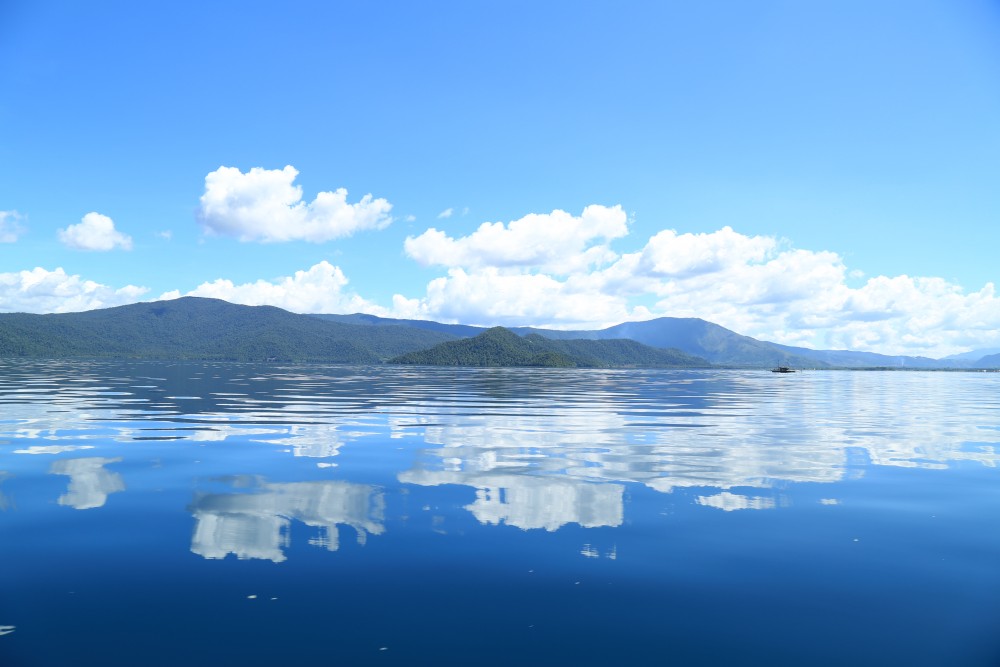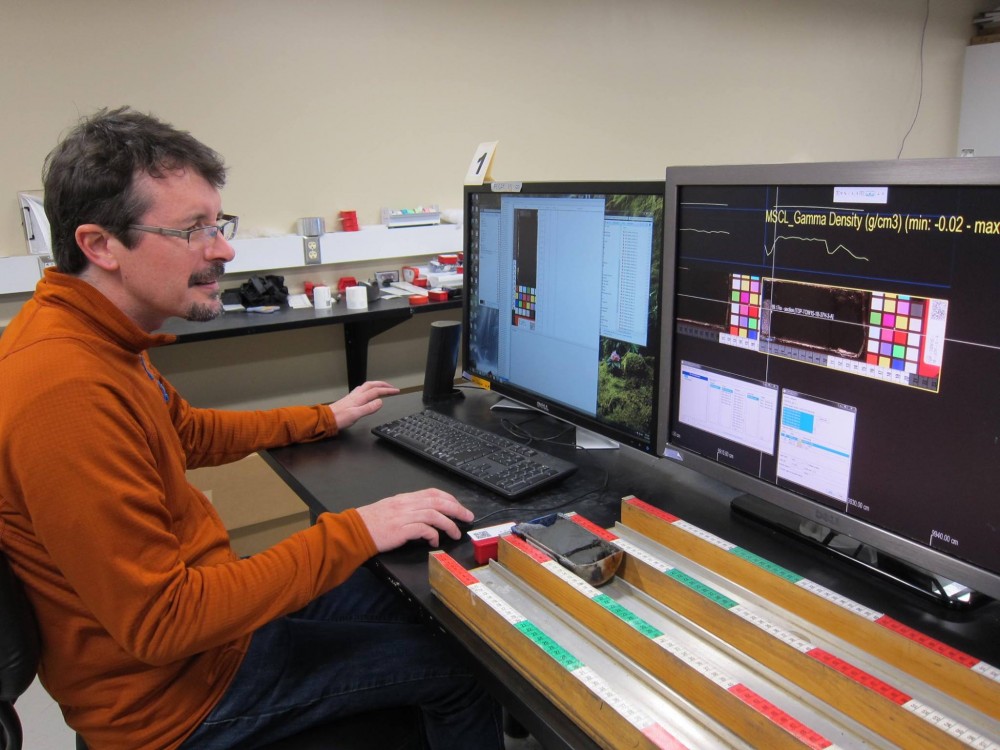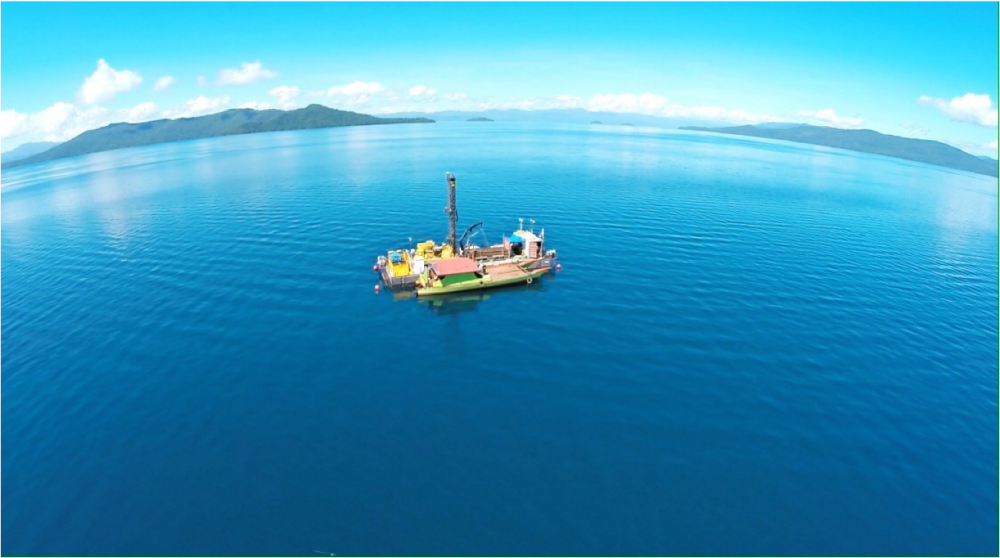Associate Professor of Earth, Environmental and Planetary Sciences Jim Russell and his team have pieced together this story by analyzing ancient sediments gathered from the depths of Lake Towuti, a yawning tectonic basin in South Sulawesi. Their findings reveal much about the region's climate history—and, potentially, about our planet's climate future.

The sediment deposits underneath beautiful Lake Towuti may hold up to a million years of climate data. Photo: Jim Russell
Location, location, location
The Indonesian archipelago sits squarely in the Western Pacific Warm Pool, an area of warmer-than-average water with an outsized influence on the global climate cycle. The El Niño Southern Oscillation emerges directly from this region, as does a large fraction of the atmosphere's stock of water vapor. That water vapor ultimately falls as precipitation—not just in the western Pacific, but all over the globe. And, it contributes to global climate change.
"Atmospheric water vapor is the most important greenhouse gas, not CO2," explains Russell. "Most of the greenhouse effect is water, and most water vapor comes from the western Pacific."
These relationships are thought to have remained relatively consistent over time, which makes Indonesia an attractive place to probe the geologic record for clues to past climate shifts. Lake Towuti alone is thought to hold somewhere around one million years worth of climate data, thanks to its dependence on the movement of Earth's tectonic plates. Indeed, both the lake and the sediment deposits underneath it are far deeper than the glacially-formed basins found closer to Brown.
"A glacier erodes out a hole in the ground and then leaves, and that's as deep as that hole will ever be," explains Russell. "But in a tectonically developing basin, the bottom will keep dropping until the tectonic motion ceases, which is typically timescales of millions to tens of millions of years. So these are systems in which you can get really, really long records of climate."
Secrets in sediment
The team's most recent drilling expedition exhumed about a kilometer's worth of sediment, and analysis is well underway.

"One of the beauties of sediments is that they hold an array of different clues of climate and environmental change because they're composed of very, very diverse materials," says Russell. "They contain mineral matter that's washed in from soils, they contain pollen grains that are blown in from the vegetation around the lake, and there are various kinds of elemental and isotopic measurements that we can make on the sediments to extract climate information."
His lab focuses mainly on reconstructing two different aspects of climate from the sediment core they extracted: temperature, and rainfall.
In order to reconstruct temperature, the team relies on leftover chemical signals from ancient organisms buried in the sediment. Russell and his colleagues extract organic material from their samples, identify specific organic compounds called biomarkers, and measure different properties of these compounds in order to determine what climatic conditions were like at the time these organisms were alive.
One of the biomarkers that the team looks for are lipids: intercellular relics of ancient microbes and animals that thrived in the lake. "A lot of organisms will very slightly alter the structure of their lipids in response to changing temperature," explains Russell. "If a bottle of olive oil gets too cold, it condenses. Organisms can't allow their lipids to condense, so they vary the lipid structures."
He continues, "We can actually measure very small structural changes in cell membrane lipids, understand how they vary in relation to temperature, and then apply that to sediment samples to constrain temperature in the past."
The team also examines organic matter for the isotopes of different elements, and especially those of water. This process helps Russell and his colleagues to reconstruct the relative amount of rainfall seen at Lake Towuti, largely due to the presence of two different types of hydrogen.
Precipitation rich in heavy hydrogen, or deuterium, always falls from a cloud first. But when rainfall is high, lighter hydrogen is forced out of the clouds, changing the ratio between the two types. Organisms like trees then incorporate both kinds of atoms into their own structure, preserving the ratio for scientists like Russell to uncover.
"By measuring isotopic composition of the leaves," he explains, "we're actually measuring the chemistry of rain, which varies in response to just how much rain is falling."
An uncertain future
The team's analysis suggests that, during the last ice age, Lake Towuti and the surrounding area was far drier than it is today. Over the next 10,000 years, as the planet moved into an interglacial period, the climate transitioned from dry to wet—in lockstep with atmospheric CO2 levels. This discovery provides an opportunity for scientists to compare past changes in climate with those that we are witnessing today.

"Since the industrial revolution, the amount of CO2 in the Earth's atmosphere has risen by about 120 parts per million (ppm)," says Russell. "And during the last glacial to interglacial transition, between 20,000 and 10,000 years ago, greenhouse gas concentrations rose by about 100 ppm. So it's about the same change."
"The big difference, of course, is how fast it happened," he continues. "It was a much slower process during previous ice age transitions. The main reason that's important is that, at present, we know we haven't seen the full effects of that greenhouse gas emission change."
If the past is any indication, suggests Russell, rainfall in Indonesia is going to increase once again, in conjunction with global greenhouse gas emissions. Indeed, downtown Jakarta now floods almost annually. It is difficult to know whether these events are directly due to climate change, since scientists don't have long-term records of rainfall in the region the same way they do in other areas; however, it is likely that overall rainfall will increase, much in the same way as it did between the last ice age and today. Scientists just don't yet know by how much.
The ambiguities in this forecast could spell trouble for the local economy. "Indonesia is a developing country," explains Russell. "The country subsists on rice and other crops that are grown expecting a certain amount of rainfall to come at a certain time. And as we look into the future, there is huge uncertainty in how rainfall patterns are going to vary in that region."
There is also considerable uncertainty surrounding how changes in climate will affect endemic species in the decades ahead. Collaborations are underway with scientists from other disciplines—for example, Institute conservation biologist Dov Sax and paleoecologist Sarah Ivory—to broaden the reach of the team's paleoclimate data into other fields.
To this end, Russell and his colleagues plan to continue examining the sediments drawn from Lake Towuti for many years ahead, painstakingly moving backward in time to determine whether the climatic patterns they have uncovered hold true for previous ice ages as well.
"Each one of these glacial-interglacial transitions represents kind of a climate experiment in which temperature and rainfall changed," he says. "And we can ask, ‘how do ecosystems sense that?'"
Paleoclimate data from the depths of Lake Towuti has the potential to answer this and a wide variety of other questions, not only about local ecology, but about agriculture, social concerns, and global climate in the decades ahead. In this way, Russell hopes that the past will help to inform the future.
Thanks to the surprisingly wide variety of signals that can be extracted from sediment, the team has many ways to make that happen. "Ultimately, I want to contribute a better fundamental understanding of how tropical rainfall changes and why," he says, "But there's a lot we can do to use the paleoclimate records to understand impacts on ecosystems and society."